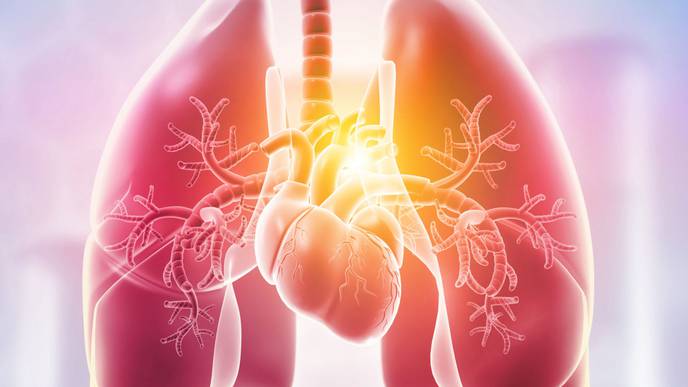Can Normothermic Regional Perfusion Increase the Number of Patients Receiving Lung Transplants?

04/15/2024
by International Society for Heart and Lung Transplantation
Re-perfusing the lungs of an organ donor with a technique called normothermic regional perfusion (TA-NRP) after the heart has irreversibly stopped beating could potentially increase the number of patients receiving lung transplants, according to researchers at the Annual Meeting and Scientific Sessions of the International Society for Heart and Lung Transplantation (ISHLT) in Prague.
TA-NRP uses a machine to pass blood through a donor's abdomen and chest after the heart has irreversibly stopped beating (called donation after circulatory death, or DCD). Thirty to forty minutes of perfusing blood to these areas reanimates the heart and ventilates the lungs.
Pedro Catarino, MD, director of Aortic Surgery at Cedars-Sinai Medical Center in Los Angeles, said techniques like TA-NRP will help get more of the available donor lungs to patients on the waiting list. Worldwide, the overall utilization of available donor lungs is only 20%.
"The utilization of donor lungs is generally quite poor," said Dr. Catarino. "For every five organ donors, we only use one set of lungs. It's even worse for DCD donors, only four to six percent in the US. The great majority of DCD donors are not giving their lungs."
Dr. Catarino presented data showing that the retrieval rate for DCD lungs has increased to about 15% with the utilization of TA-NRP. However, some lung experts harbor concerns that lungs are injured during the in situ perfusion process.
"TA-NRP is technically possible, and some surgeons have successfully used it to retrieve both the heart and lungs from DCD donors," said Shaf Keshavjee, MD, MSc, FRCSC, FACS, director of the Toronto Lung Transplant Program. "However, when TA-NRP was introduced in the US, the incidence of lung retrieval decreased.
"I think NRP could save more hearts, kidneys, livers, and lungs," said Dr. Keshavjee. "But we need to standardize our technique because there are too many examples of good donor lungs damaged by TA-NRP."
TA-NRP is currently only being used in the US and Spain. In Canada, DCD donor lungs are removed from the body and perfused outside the body (ex vivo) in a machine. Machine perfusion, which gives the surgical team control over the fluids used to perfuse the lungs, has been highly successful for the Toronto Lung Transplant Program.
"We have the largest lung transplant program in the world," said Dr. Keshavjee. "We use 40% of DCD lungs, whereas the US uses only 4%."
Unlike machine perfusion, which is not readily available worldwide, Dr. Catarino said that TA-NRP is a technique that anyone can use.
"Using TA-NRP, we're also to measure the oxygen transfer in the lungs, which is a very good indicator of the quality of the donor's lungs," he said. "Being able to perform this functional assessment is one of its great benefits."
Dr. Catarino said there is data that suggests outcomes following TA-NRP for DCD lungs are very good.
"TA-NRP is a way to get more lungs to patients who need them," he said. "DCD was 32% of overall organ donors in the US in 2022, and the trajectory is going upward."
The ISHLT has launched a task force to produce a statement that summarizes the best available evidence and practice for NRP, including outlining issues, concerns, and areas for future research.
Provided by International Society for Heart and Lung Transplantation
Citation: Can normothermic regional perfusion increase the number of patients receiving lung transplants? (2024, April 12) retrieved 12 April 2024 from https://medicalxpress.com/news/2024-04-normothermic-regional-perfusion-patients-lung.html
This document is subject to copyright. Apart from any fair dealing for the purpose of private study or research, no part may be reproduced without the written permission. The content is provided for information purposes only.

Facebook Comments